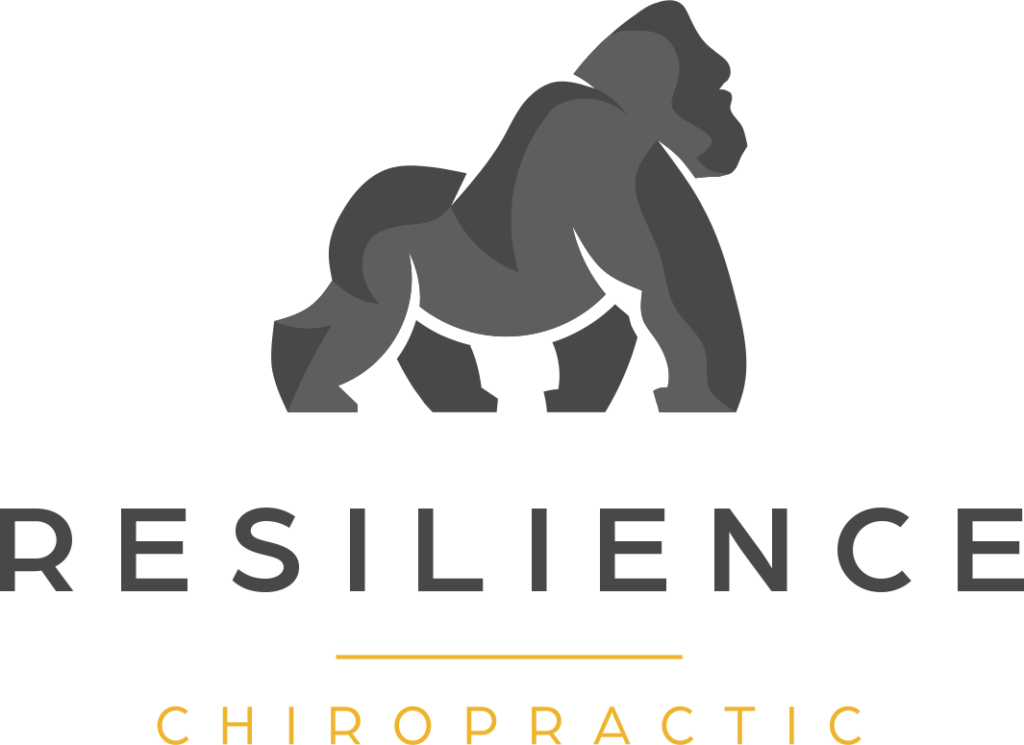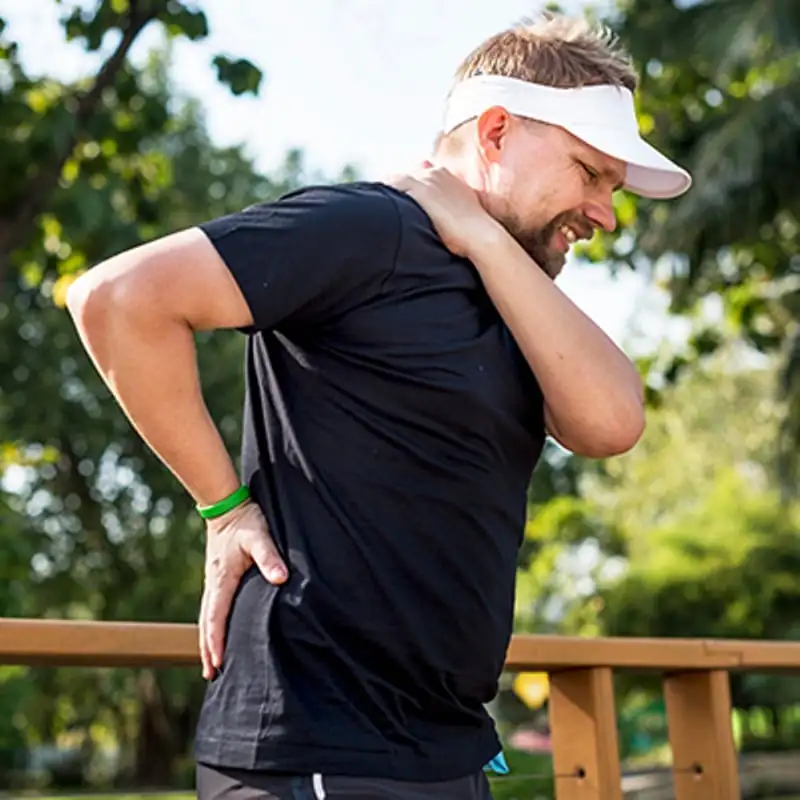When dealing with a sports injury, it's crucial to understand that effective recovery goes beyond simply resting. As your local chiropractor, I want to emphasize that there are several holistic techniques that can significantly enhance your healing process. While you may think taking it easy is sufficient, integrating approaches like personalized chiropractic adjustments, tailored physical therapy, balanced nutrition, and mindfulness practices can make a world of difference in your recovery journey.
Chiropractic care focuses on aligning your body and facilitating natural healing, which can alleviate pain and improve mobility. Each of these methods plays a vital role in helping you return to your peak performance. So, what specific strategies should you incorporate for optimal results? Let's delve into the top techniques that can guide you on your path to recovery and help you get back to doing what you love.
Rest and Recovery
When it comes to recovering from sports injuries, it's crucial to understand the importance of rest and recovery—something that often gets overlooked. As a chiropractor, I frequently see patients who feel compelled to push through their pain. However, this approach can lead to more serious injuries and extended recovery times. Your body needs adequate time to heal, and prioritizing that time is essential for a complete recovery.
First and foremost, it's vital to listen to your body. If you're experiencing pain or discomfort, it's a clear signal that you should take a break. Resting allows your injured tissues the opportunity to repair themselves, reducing inflammation and minimizing the risk of further injury. Jumping back into your routine too soon can significantly hinder your progress.
In addition to rest, incorporating active recovery can be beneficial. You don't have to be completely inactive; instead, consider engaging in low-impact activities that won't exacerbate your injury. Gentle stretching or light walking can help maintain mobility while allowing your body to heal.
Ensuring you're getting quality sleep is another critical component of recovery. Proper sleep supports your body's natural healing processes and helps restore strength.
Nutrition also plays a vital role in your recovery journey. A balanced diet, rich in proteins, vitamins, and minerals, can significantly aid in tissue repair and enhance your immune system. Staying well-hydrated is equally important; drinking enough water ensures that your body functions optimally during the healing process.
As your chiropractor, I encourage you to embrace these principles of rest, active recovery, sleep, and nutrition. They're all integral parts of natural healing that will help you return to your sport stronger and healthier.
Ice Therapy
As a local chiropractor, I want to share the benefits of ice therapy, especially if you're navigating the aftermath of an injury. This simple yet effective method can significantly enhance your recovery journey. When you apply ice to an injured area, it works wonders by reducing swelling and numbing pain, which can help you regain your mobility more quickly. The cold therapy constricts blood vessels, decreasing blood flow to the affected area and minimizing inflammation.
To get started with ice therapy, you can use an ice pack or even a bag of frozen vegetables. However, it's important to wrap it in a thin cloth to protect your skin from frostbite. Apply this cold treatment to the injured area for about 15 to 20 minutes every hour, as needed. Remember, never place ice directly on your skin; that cloth barrier is crucial!
Timing plays a key role in the effectiveness of ice therapy. The sooner you begin this treatment after an injury, the better your results will be. I recommend continuing ice therapy for the first 48 hours to truly make a difference in your healing process. After that initial period, you can gradually transition to heat therapy, which will help promote blood flow and support healing.
Always listen to your body. If you experience numbness or discomfort, it's important to remove the ice immediately. For optimal results, consider combining ice therapy with rest and elevating the injured area to further reduce swelling.
Incorporating ice therapy into your recovery routine can significantly accelerate the healing process and get you back to your normal activities sooner. By following this straightforward technique, you're likely to notice a meaningful improvement in your recovery timeline.
If you have any questions or need further guidance, I'm here to help you through your healing journey.
Compression Techniques
As a local chiropractor, I want to share with you the importance of compression techniques in your sports injury recovery journey. These methods aren't only effective in reducing swelling but also provide essential support to the injured area, facilitating a quicker return to your active lifestyle.
By applying pressure to the injury site, you can improve blood circulation and minimize fluid buildup, both of which are crucial for healing and regaining mobility. Here are some practical compression techniques that you might find beneficial:
- Elastic bandages: These are incredibly versatile and can be easily wrapped around the injured area to create adjustable pressure. It's important to ensure that the bandage is snug but not too tight, as we want to avoid cutting off circulation.
- Compression garments: Specialized clothing, such as sleeves, socks, or shorts, are designed to provide consistent support. Often made from moisture-wicking materials, these garments keep you comfortable while delivering the necessary compression.
- Cold compression therapy: This technique combines the benefits of cold therapy with compression. Using wraps or sleeves that offer cold therapy can significantly help in reducing swelling and numbing pain, especially immediately after an injury occurs.
- Foam rollers: While commonly used for muscle recovery, foam rollers can also be effective in applying compression to specific areas. By rolling over an injured spot, you can alleviate tightness and enhance blood flow, which aids in the healing process.
Integrating these compression techniques into your rehabilitation routine can significantly speed up recovery.
Always listen to your body and consult with a healthcare professional—like myself—if you're uncertain about the best methods for your specific injury. Natural healing is a journey, and I'm here to support you every step of the way.
Elevation Methods
As a local chiropractor, I want to share some important insights about the elevation methods that can significantly aid your recovery from a sports injury.
When you experience an injury, elevating the affected area can greatly reduce swelling and promote healing. It's essential to find the right height for elevation—typically, the injured area should be raised above the level of your heart for optimal results.
Additionally, knowing how long to maintain this elevated position is crucial. Generally, aim to keep the area elevated for 20 to 30 minutes at a time, several times a day, especially in the initial stages of recovery.
By incorporating these elevation techniques into your healing routine, you can enhance your recovery process and get back to your active lifestyle more effectively.
Optimal Height for Elevation
As a local chiropractor, I want to emphasize the importance of elevating an injured limb to aid in your recovery process. Elevation is a key technique that can help reduce swelling and promote healing naturally. The height at which you elevate the injured area is crucial for ensuring proper blood circulation and minimizing discomfort.
For optimal results, it's best to keep the injured limb elevated above heart level. This positioning encourages fluid to drain away from the injury site, which can significantly reduce edema and speed up the healing process.
Here are some practical tips to help you achieve effective elevation:
- Use pillows: Stacking pillows can provide a comfortable and supportive way to elevate your limb. Ensure that the pillows are arranged to maintain proper alignment and support.
- Adjust your position: When lying down, make sure your limb is resting on a stable surface that allows for effective elevation without compromising your comfort.
- Monitor comfort: Pay attention to how your body feels. The goal is to relieve pressure, so if the elevation causes any strain or discomfort, consider adjusting the position or the height.
- Stay consistent: It's essential to elevate your limb regularly throughout the day, particularly after engaging in any physical activity. Consistency can make a significant difference in your recovery.
By following these guidelines, you can help facilitate your body's natural healing processes and reduce recovery time.
Duration of Elevation Therapy
As a local chiropractor, I want to share some vital information about elevation therapy and how it can support your recovery process. Elevation therapy is a simple yet effective technique that can make a significant difference, especially in the first 48 hours after an injury.
To maximize the benefits of elevation therapy, I recommend that you keep the injured area elevated for about 30 minutes every couple of hours. This practice helps to reduce swelling and enhances circulation, which is crucial for faster healing. Consistency is essential here—try to stick to this schedule as much as possible.
When elevating your limb, aim to position it above heart level. This elevation encourages fluid drainage and minimizes inflammation, which can alleviate discomfort and promote recovery. If maintaining this position for a full 30 minutes feels challenging, don't worry—shorter sessions can still be helpful. However, I encourage you to work towards longer durations when you can.
As your injury starts to mend, you can gradually cut back on how often and how long you elevate the affected area. But keep an eye on any swelling—if it returns or worsens, revert to the original elevation routine.
It's also important to complement elevation with other recovery strategies, such as applying ice and ensuring you get plenty of rest.
By incorporating elevation therapy into your healing regimen, you're actively participating in your body's natural recovery process. This approach can help you return to your favorite activities sooner.
Always listen to your body and feel free to reach out if you have any questions or need further guidance. Your health and well-being are my top priorities!
Physical Therapy
As a local chiropractor, I want to emphasize the vital role chiropractic care plays in your recovery process after a sports injury.
Through specialized rehabilitation programs tailored to your needs, we focus on restoring strength and flexibility in a natural way. Our manual therapy techniques not only help alleviate pain but also enhance your mobility, allowing you to regain your full range of motion.
In addition to addressing your immediate concerns, we'll also educate you on effective injury prevention strategies.
Rehabilitation Exercise Programs
As a local chiropractor, I want to share with you the benefits of targeted rehabilitation exercise programs for your recovery from sports injuries. These programs are specifically designed to help you regain strength, flexibility, and overall function, allowing you to heal naturally without relying solely on medication or invasive procedures.
When you engage in a rehabilitation exercise program, we'll focus on several essential areas:
- Strengthening: We aim to build muscle around the injured area, which provides better support and stability during your daily activities and sports.
- Flexibility: Improving your range of motion is crucial for returning to your sport safely and effectively. We'll incorporate exercises that promote flexibility to help with this.
- Balance and Coordination: Enhancing your stability is vital to avoid re-injury. Our programs will include activities that improve your balance and coordination.
- Endurance: Increasing your stamina is essential for performing at your best for longer periods. We'll work together to boost your endurance through targeted exercises.
By working closely with a qualified chiropractor, you can ensure that you're following the right exercises tailored to your specific needs.
I'll monitor your progress throughout your recovery and make necessary adjustments to your program. It's important to stay committed and patient during this process.
Remember, recovery is a journey, and with each step, you're moving closer to returning to your sport stronger and more resilient than ever.
Embrace the natural healing process with chiropractic care and exercise, and let's work together to achieve your recovery goals!
Manual Therapy Techniques
As a local chiropractor, I want to share the benefits of incorporating manual therapy techniques into your recovery process. These hands-on approaches can significantly enhance the rehabilitation exercise programs you may already be following. By focusing on alleviating pain, improving mobility, and promoting overall healing, manual therapy can be an invaluable part of your recovery journey.
Techniques such as massage, joint mobilization, and myofascial release are designed to reduce muscle tension and increase circulation, which are crucial for effective healing. During your sessions, I'll use my hands to manipulate your soft tissues and joints, specifically targeting areas impacted by your injury. This process not only alleviates pain but also helps restore normal function and range of motion.
Many patients find that these techniques relieve tightness and stiffness, making it much easier to engage in their rehabilitation exercises.
Additionally, manual therapy addresses any compensatory movement patterns that may have emerged as a result of your injury. By correcting these patterns, we can help prevent further injury and ensure a more efficient recovery.
It's essential to maintain open communication with me about your pain levels and progress. Together, we can create a personalized manual therapy plan tailored to your unique needs, ultimately enhancing your recovery experience and helping you return to your favorite activities sooner.
Injury Prevention Strategies
As a local chiropractor, I want to emphasize the importance of preventing sports injuries to maintain a vibrant and active lifestyle. Understanding how to keep your body in prime condition is essential for enhancing your performance and enjoying your favorite activities.
Integrating effective injury prevention strategies into your routine can make a significant difference.
Here are some key points to consider:
– Warm-Up and Cool Down: It's crucial to start every physical activity with a proper warm-up. This prepares your muscles for exertion and helps prevent injuries.
Equally important is the cool down, which aids in recovery and helps your body transition back to a resting state.
- Strength Training: Engaging in strength training exercises is vital. These exercises build muscle support around your joints, contributing to greater stability and significantly reducing the risk of injury.
- Flexibility and Balance: Incorporating flexibility and balance exercises can enhance your body's range of motion and overall stability.
This not only helps in preventing injuries but also improves your athletic performance.
– Listen to Your Body: Being mindful of your body is key. Pay attention to any signals of fatigue or discomfort.
If you're feeling pain, don't push through it. Taking breaks when needed is essential to avoid overtraining and allow your body to heal.
By embracing these strategies, you can protect yourself from injuries and promote natural healing.
Chiropractic care can complement these efforts by ensuring your spine and joints are aligned, enhancing your overall well-being and performance.
Stretching and Flexibility
As a local chiropractor, I want to emphasize the importance of incorporating stretching and flexibility into your recovery process, especially if you're dealing with sports injuries. While many people focus on strength training and conditioning, neglecting flexibility can significantly impede your healing journey. A regular stretching routine is essential for recovery and overall well-being.
Stretching plays a crucial role in maintaining your range of motion, reducing muscle stiffness, and promoting healthy blood circulation—all vital components for healing. I recommend starting with gentle static stretches, holding each position for 15 to 30 seconds. Pay particular attention to the areas affected by your injury. For instance, if you're recovering from a hamstring strain, consider stretches such as the standing hamstring stretch or seated forward bend. These exercises can help relieve tension and improve your flexibility, allowing you to regain mobility more efficiently.
As you progress in your recovery, dynamic stretching becomes increasingly beneficial. This type of stretching involves controlled movements that simulate actions related to your sport. For example, leg swings and arm circles can effectively prepare your muscles for activity while enhancing your flexibility.
It's vital to listen to your body during this process. If you experience pain while stretching, ease off and modify your technique. Gradually increase the intensity and duration of your stretches as you heal. Consistency is key—aim to stretch at least three to four times a week.
Incorporating stretching and flexibility exercises into your recovery routine not only aids in healing but also plays a significant role in preventing future injuries. By prioritizing this aspect of your training, you can set yourself up for a more effective recovery and a stronger return to your favorite activities.
If you have any questions about how stretching can fit into your recovery plan, feel free to reach out!
Nutritional Support
As a local chiropractor, I want to emphasize the importance of stretching and flexibility in your recovery process. However, these practices are most effective when combined with proper nutrition. When you're healing from a sports injury, your body requires the right nutrients to facilitate effective recovery. By focusing on specific dietary components, you can support tissue repair, reduce inflammation, and enhance your overall health.
Here are some essential nutritional considerations to keep in mind during your recovery journey:
- Protein: Adequate protein intake is crucial for rebuilding muscle tissues and aiding the healing process. Look for lean sources, such as chicken, fish, beans, and legumes, to incorporate into your meals.
- Healthy Fats: Omega-3 fatty acids, which can be found in fish, flaxseeds, and walnuts, are beneficial for reducing inflammation and promoting recovery.
- Vitamins and Minerals: Nutrients like vitamin C, vitamin D, calcium, and zinc are vital for healing. Ensure you include plenty of fruits, vegetables, and whole grains in your diet to achieve a well-rounded nutrient intake.
- Hydration: Staying properly hydrated is essential for optimal recovery. Water not only helps transport nutrients to your cells but also aids in minimizing soreness.
As you focus on these nutritional aspects, it's important to maintain a balanced diet that features a variety of foods. This holistic approach not only enhances your recovery but also prepares your body for future physical activities.
Pain Management
As a local chiropractor, I want to emphasize the importance of pain management in your recovery from sports injuries. Effective pain control is essential to help you engage in rehabilitation exercises, which are crucial for a successful recovery. I encourage you to consult with me or your healthcare provider to create a personalized pain management strategy that aligns with your specific injury.
While over-the-counter medications like ibuprofen or acetaminophen can offer initial relief, it's important to be mindful of their use. These nonsteroidal anti-inflammatory drugs (NSAIDs) can help reduce inflammation and alleviate pain, but I recommend discussing their use with me to ensure they fit into your overall recovery plan.
Incorporating chiropractic care into your recovery can be incredibly beneficial. Through targeted adjustments and therapies, I can help alleviate pain and promote healing. Techniques such as spinal manipulation, myofascial release, and soft tissue therapies can significantly reduce discomfort and enhance your mobility, enabling you to return to your favorite activities sooner.
Don't overlook the importance of rest and ice in your recovery. Applying ice to the injured area for 15-20 minutes several times a day can help minimize swelling and provide pain relief. It's vital to give your body the necessary time to heal properly.
Furthermore, consider exploring complementary therapies like acupuncture or massage, which I can help facilitate. These alternative methods can provide additional pain relief and relaxation, further supporting your healing journey.
Gradual Return to Activity
After focusing on effective pain management, it's essential to prioritize a gradual return to physical activity for a safe and successful recovery from your sports injury. Jumping back into your routine too quickly can lead to setbacks, prolonging your healing process.
Instead, let's take a structured approach to reintroducing movement. As your local chiropractor, I recommend starting by consulting with me or another healthcare professional who specializes in musculoskeletal health. We can provide personalized guidance based on your specific injury and progress.
Here's how to smoothly transition back into your sports activities:
- Tune into Your Body: It's important to listen to how your body responds during movement. If you experience any pain or discomfort, ease off and reach out to your healthcare provider for advice.
- Initiate with Low-Intensity Activities: Begin with gentle exercises that won't strain the injured area. Activities like walking, swimming, or cycling are excellent choices to help you gradually ease back into a routine without risking further injury.
- Increase Intensity Gradually: As you regain strength and confidence, slowly ramp up the intensity and duration of your workouts. This careful progression allows your body to adapt without becoming overwhelmed.
- Add Sport-Specific Drills: Once you feel comfortable with low-impact activities, start incorporating sport-specific drills at a lower intensity. This helps your body adjust to the specific demands of your sport while reducing the risk of re-injury.
Mental Health Strategies
Recovering from a sports injury encompasses more than just the physical healing; your mental health is a crucial component of the recovery journey. As a local chiropractor, I want to emphasize that when you're sidelined, feelings of frustration or anxiety can arise, potentially impeding your rehabilitation process.
To address these emotions and support your overall recovery, it's essential to incorporate effective mental health strategies alongside your chiropractic care.
First, I encourage you to practice mindfulness. Taking a few moments each day to focus on your breath and remain present can significantly alleviate stress and enhance your emotional resilience.
Additionally, consider journaling your thoughts and feelings. Writing can be an invaluable tool, allowing you to process emotions and keep track of your healing journey.
Next, it's important to set realistic goals for your recovery. Break your rehabilitation into smaller, achievable milestones, and celebrate each success, no matter how minor. This approach will help keep your motivation high and provide a sense of purpose as you work towards getting back to your best self.
Stay connected with your support network. Engage with friends, family, or teammates who can offer encouragement and understanding during this challenging time. Sharing your experiences can lighten the emotional burden and remind you that you're not alone in your recovery journey.
Lastly, don't hesitate to seek professional help if you find yourself struggling. As a chiropractor, I can work alongside other healthcare professionals to provide you with tools and coping strategies tailored to your unique situation.
Remember, your mental well-being is just as vital as your physical healing. By prioritizing your mental health, you'll not only facilitate a faster recovery but also emerge stronger and more resilient than ever before.
Embrace this holistic approach to healing, and let's work together to support your journey to wellness.
Conclusion
As a local chiropractor, I want to share some valuable techniques that can significantly enhance your recovery from sports injuries and help you return to your favorite activities more quickly. First and foremost, it's essential to prioritize rest; your body needs time to heal. Utilizing ice and compression can help alleviate swelling and pain, making you more comfortable during your recovery.
I also recommend considering physical therapy that is tailored specifically to your needs. This personalized approach can help you regain strength and mobility. Nutrition plays a crucial role in healing as well; a balanced diet rich in vitamins and minerals can support your recovery process. Additionally, don't underestimate the importance of mental health strategies—staying positive and focused can make a big difference.
As you start to return to activity, it's vital to do so gradually. This will help prevent re-injury and ensure that your body is ready for the demands of sports. By incorporating these preventative measures, not only will you recover effectively, but you'll also reduce the risk of future injuries. Stay committed to your recovery journey, and with the right support, you'll emerge stronger and more resilient than ever!



